Rajma Chawal is a traditional North Indian dish that combines the creamy texture of red kidney beans (rajma) and aromatic, fluffy rice (chawal). It’s a wholesome and nutritious meal that’s popular for its comforting flavor and loaded with health benefits. This recipe explains how to make Rajma Chawal step by step, followed by an analysis of its nutritional value and health benefits.
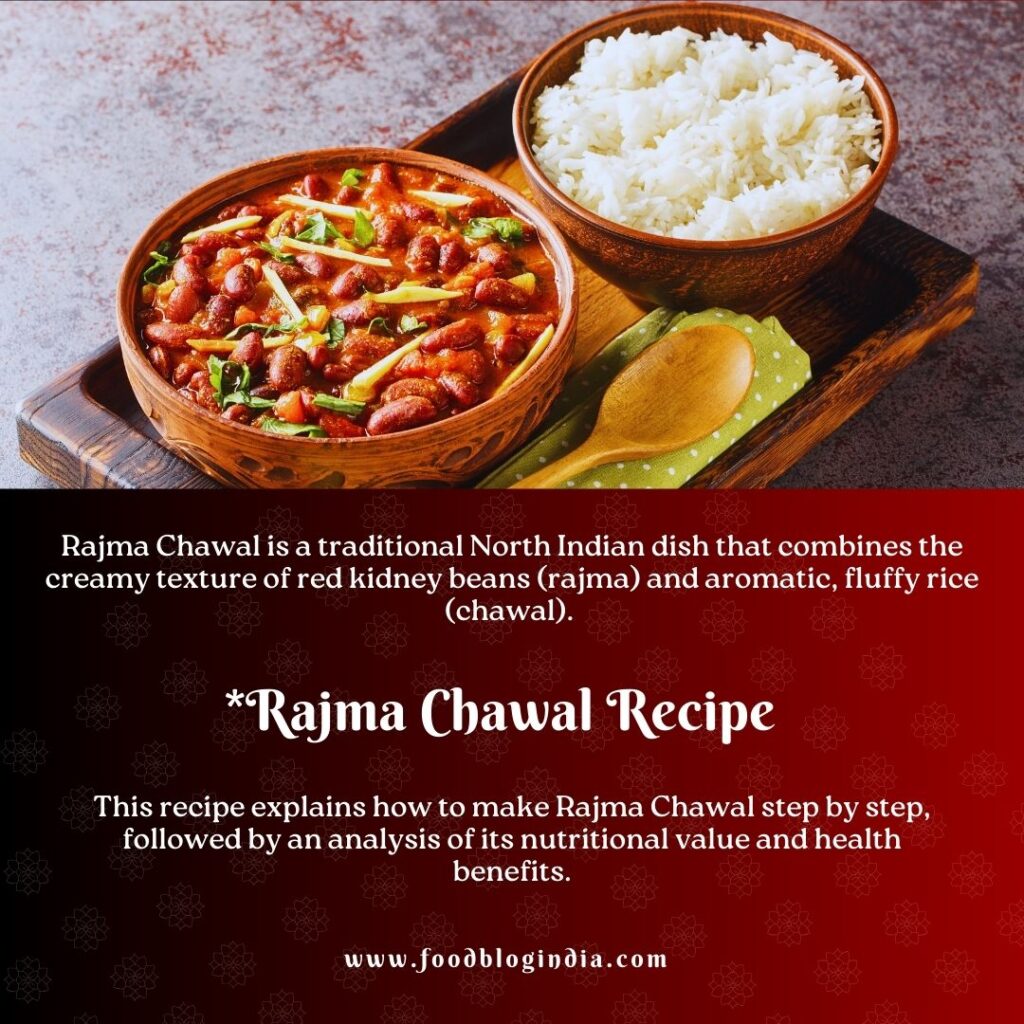
Rajma Chawal Recipe Ingredients
| Cooking Rajma | Rice |
|---|---|
| Rajma (Red Kidney Beans)– 1 cup (soaked overnight or for 8-10 hours) | Basmati Rice– 2 cups |
| Water– 4 cups | Water– 4 cups |
| Salt– 1 tsp | Salt– 1 tsp |

| Gravy |
|---|
| Onion– 2 medium, finely chopped |
| Tomatoes– 3 medium, pureed |
| Garlic– 4-5 cloves, minced |
| Ginger– 1-inch piece, grated |
| Green Chilies– 2, finely chopped |
| Oil or Ghee– 2 tbsp |
| Cumin Seeds– 1 tsp |
| Bay Leaf– 1 |
| Turmeric Powder– ½ tsp |
| Coriander Powder– 1 tsp |
| Red Chili Powder– ½ tsp |
| Garam Masala– ½ tsp |
| Kasuri Methi (Dried Fenugreek Leaves)– 1 tsp, crushed |
| Fresh Coriander Leaves– For garnish |
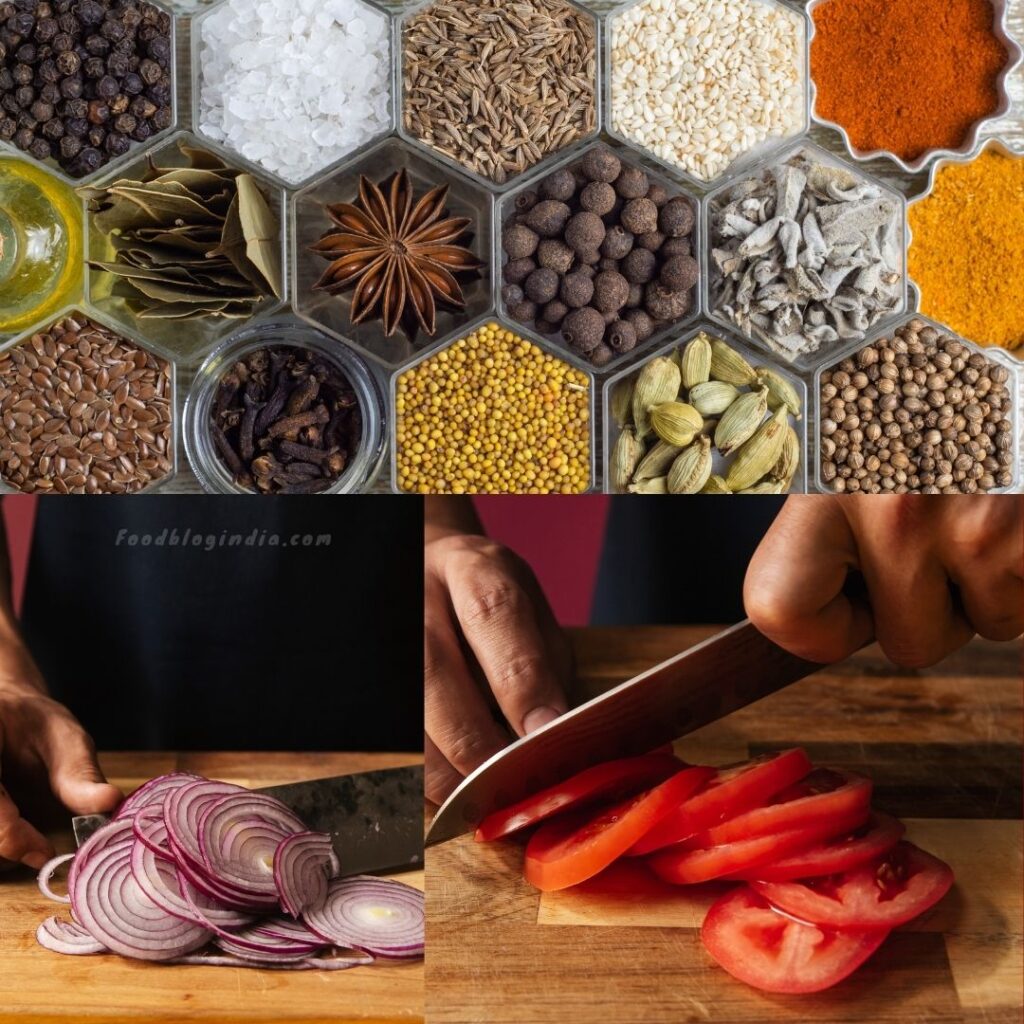
Rajma Recipe-
Soaking and Cooking Rajma
Soak Rajma- Rinse the rajma thoroughly and soak it in enough water for 8-10 hours or overnight. This step softens the beans, which makes them easier to cook and digest.
Cook in a Pressure Cooker- Drain and rinse the soaked rajma before transferring it to a pressure cooker. Combine 4 cups of water and 1 teaspoon of salt.
Pressure Cook- Cook for 6-8 whistles at medium heat. The beans should be soft, but not mushy. Set aside.

Rajma Curry
Preparing the Gravy
– In a heavy-bottomed pan, heat 2 tablespoons oil or ghee.
– Tempering, Add cumin seeds and allow to splutter. Add a bay leaf for flavor.
– Aromatics, including minced garlic, grated ginger, and chopped green chilies. For 1-2 minutes, until fragrant.
– Stir in the finely chopped onions and cook until they are golden brown. This caramelization adds depth of flavor.
– Pour in the tomato puree. Cook until the oil separates from the mixture, indicating that the tomato rawness has gone.
– Spices, Combine turmeric powder, coriander powder, red chili powder, and a pinch of salt. Mix well and cook for an additional 2 minutes.
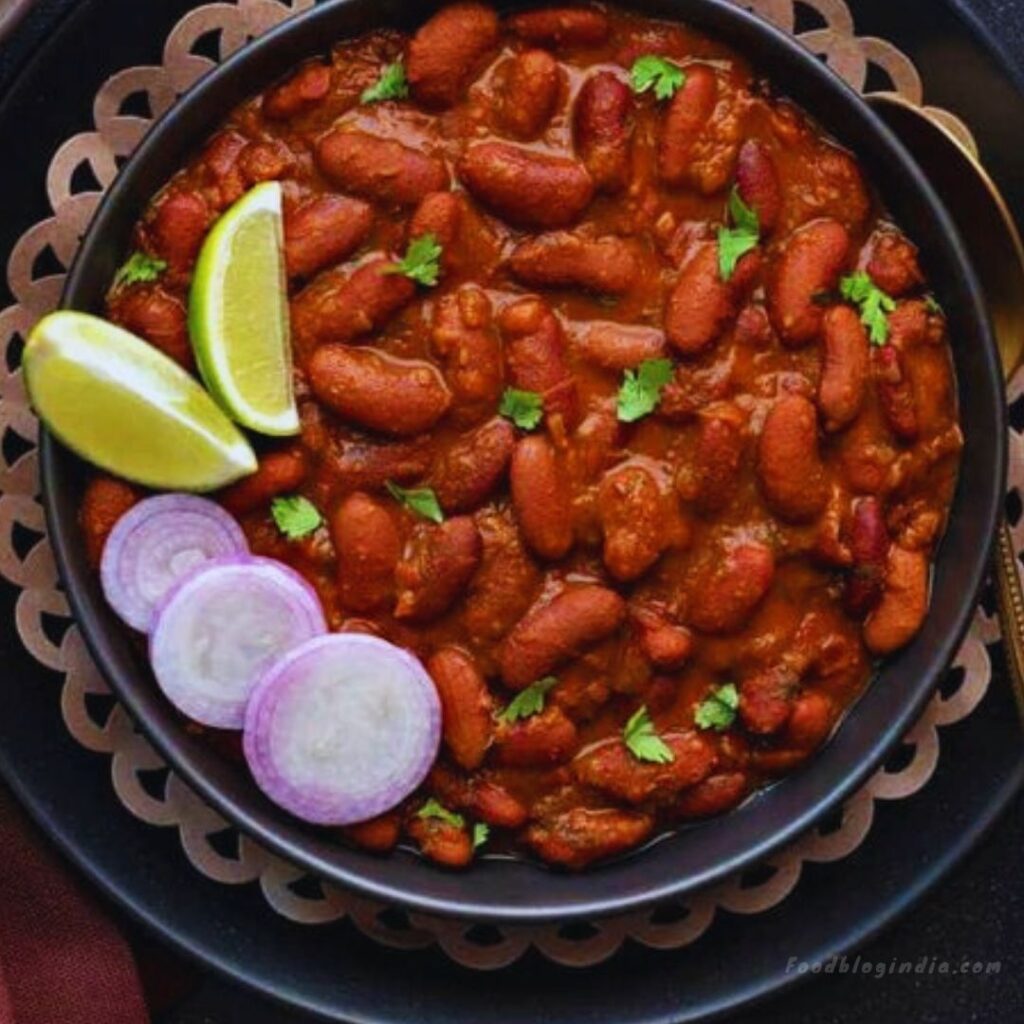
Rajma Masala
Simmering the Rajma
– Combine Rajma and Gravy, Combine the cooked rajma with the water from the pressure cooker. Mix well.
– Simmer the rajma over low heat for 15-20 minutes. Stir occasionally to avoid sticking. This allows the beans to absorb the gravy’s flavors.
– Adjust Spices, Taste and adjust salt and spices as necessary. Add garam masala and crushed kasuri methi near the end.
– Mash a few rajma beans with the back of a ladle to achieve a creamier consistency, if desired.
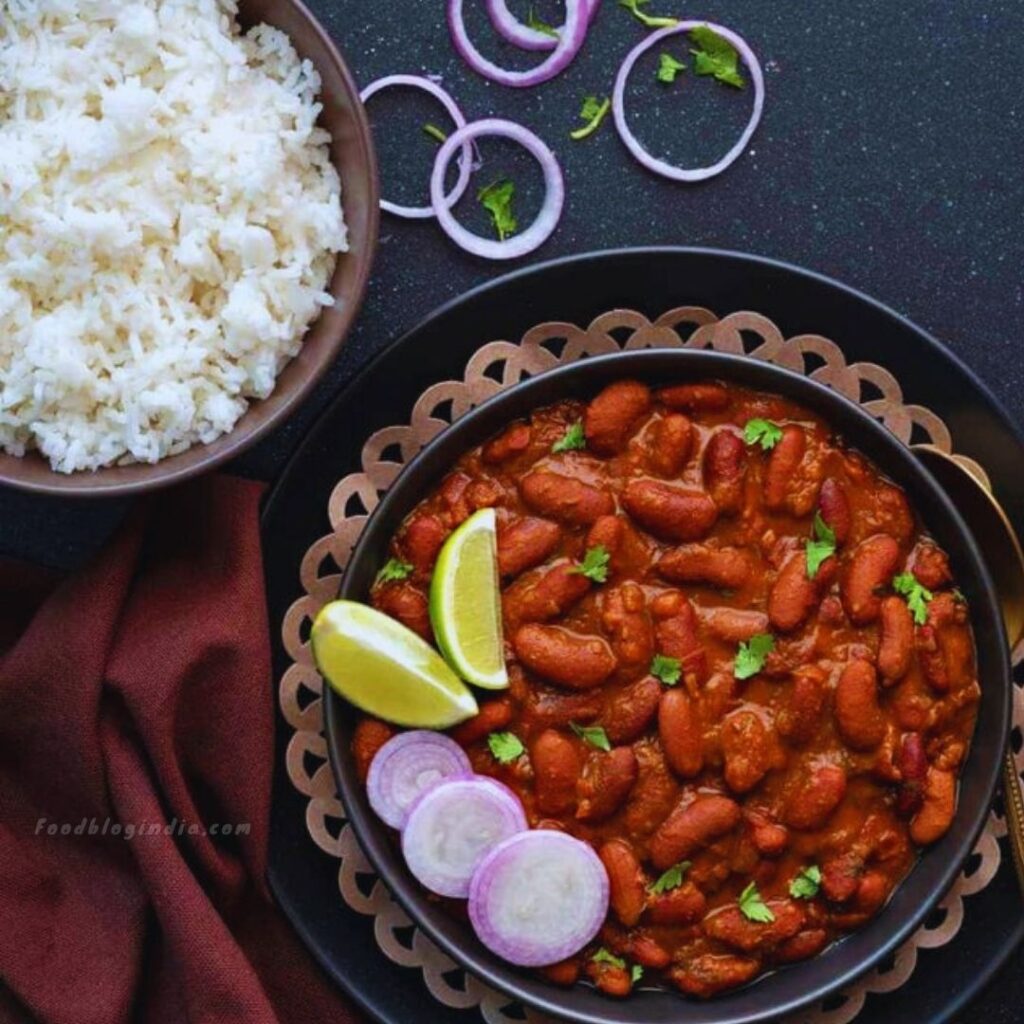
Rajma Chawal
Cooking the Rice
– Wash and soak rice, Rinse the basmati rice until the water runs clear. Soak in water for 20–30 minutes.
– Cook rice, In a large pot, bring 4 cups of water to a boil with 1 teaspoon of salt. Cook the soaked rice until al dente. Drain off excess water and fluff with a fork.

Rajma Chawal Benefits
– Rajma is a high-quality plant-based protein source, making it ideal for vegetarians. Protein helps muscles repair and grow.
– High fiber content aids digestion, prevents constipation, and promotes gut health.
– Rajma contains soluble fiber, which helps lower cholesterol levels and reduces the risk of heart disease.
– Rajma has a low glycemic index, making it suitable for diabetics as it helps to maintain stable blood sugar levels.
– Micronutrient-rich, It contains iron, magnesium, potassium, and folate, all of which are necessary for energy production, heart health, and general well-being.
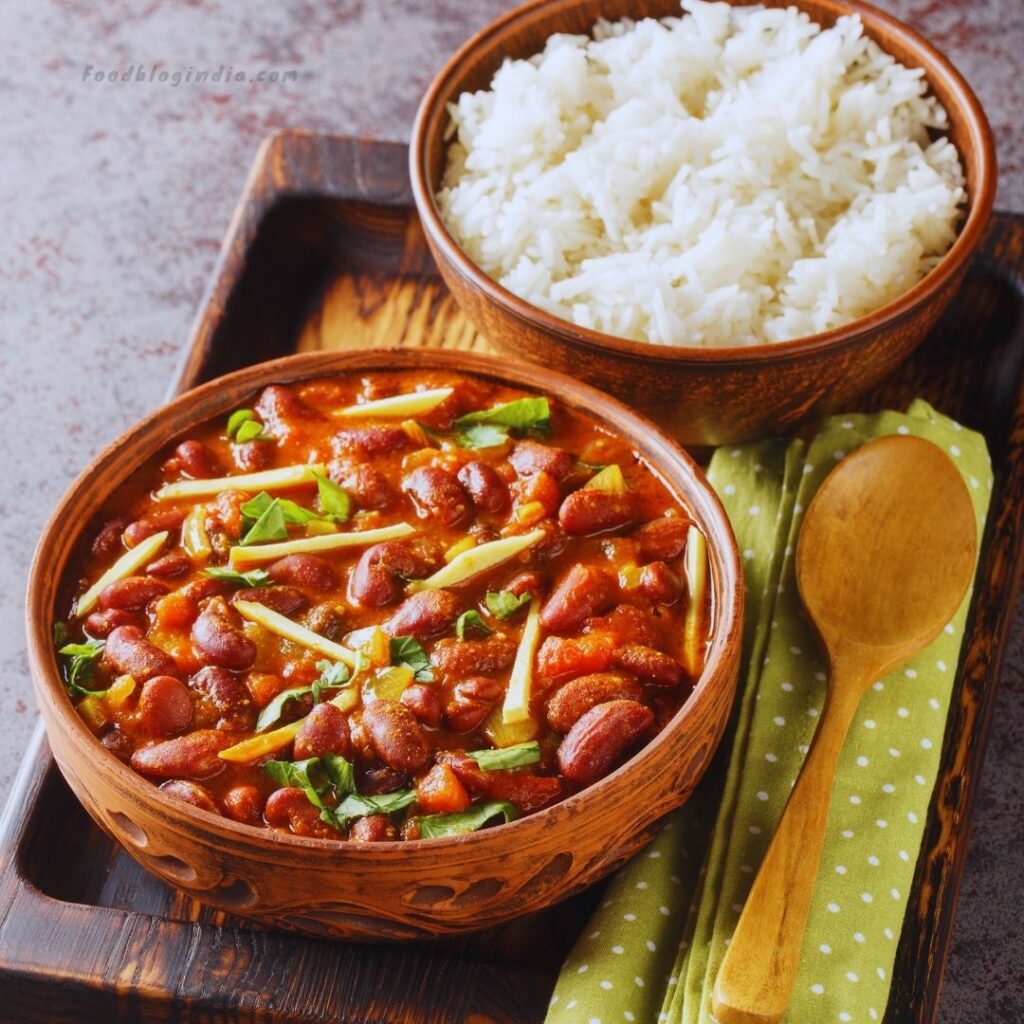
Tips for the Best Rajma Chawal
– Soaking Beans, Always soak rajma for the recommended amount of time to ensure even cooking and digestion.
– Slow Cooking, Simmering the rajma in the gravy allows the flavors to blend perfectly.
– Rice Quality, Choose high-quality basmati rice for its aroma and texture.
– Ghee Finish, Pouring a spoonful of ghee on top improves the dish’s flavor and richness.

Rajma-
Rajma Chawal is more than just a meal, it’s a comforting experience that captures the essence of Indian foods. This dish is simple to prepare, full of nutrients, and suitable for any occasion. Its combination of taste and health benefits has made it a household staple in India and a must-try for foodies around the world.

